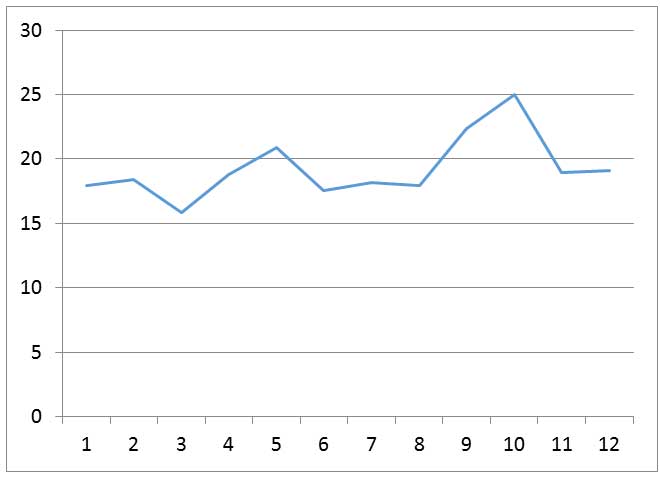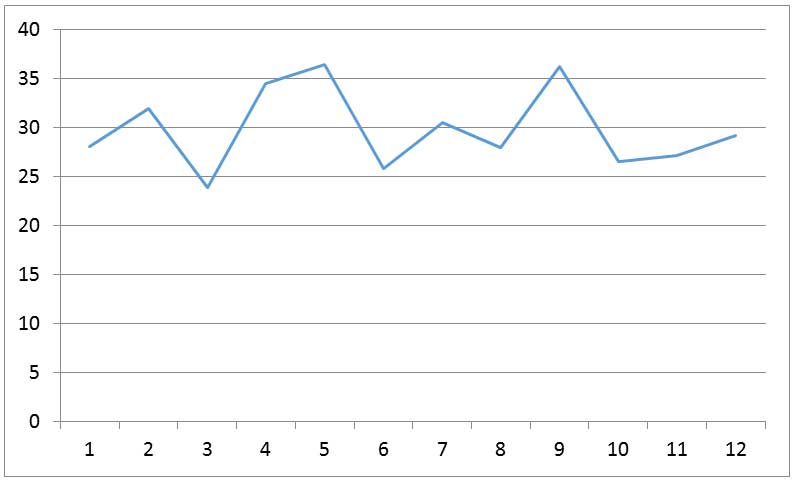Presently there is considerable focus being paid to the Judicial accountability and Judicial appointments bills. These are necessary but do they address the biggest problem of the judicial system? The biggest problem of our judicial system is that it does not deliver in any reasonable time. Consequently over 80% of Indians will not approach the courts, unless they are trapped by the system. If a poor man is implicated in a civil or criminal case he is unwillingly trapped, since there is no time limit for the judicial system. The respect for rule of law has almost disappeared since the powerful can ensure that they will never have to pay for their crimes, even if they are caught.
The Chief Justice has rightly refused to fast track only cases against MPs, since it effectively means pushing the others back in the queue. The Supreme Court needs to make a commitment on how it would deliver timebound justice and what would be required for this. I decided to take a look at the issue by doing some number crunching with the objective of trying to estimate the number of judges required. Data has been taken from the Supreme Court website for twelve quarters from July 2009 to June 2012.
I noted the new cases Instituted in each quarter, disposal and the pending cases in the Supreme Court, High Court and the District & Subordinate Courts. Using simple arithmetic it is possible to get the number of months’ pendency. I have calculated for each quarter, and in no case did the backlog appear to be over 36 months. The average pendency for the Supreme Court, High Court and the District & Subordinate Courts for the period July 2009 to June 2012 comes to 9 months 30 months and 19 months respectively. The legal profession is aghast when one talks about measuring such numbers, on the ground that the differences in cases is vast. However, over a large number of courts and cases, the large variations due to different cases would even out and can be used to compare or find possible solutions. Besides the evaluation is based on 12 quarters over three years, and appears to show some consistency as revealed in the graphs.
This appears to indicate that if the principle of ‘First In First Out’ (FIFO) could be strictly followed, this may be the time for a case to go through the Courts. This would not be feasible completely, but there can be no justification for many cases taking more than double the average time in the Courts. The Courts should lay down a discipline that almost no case could be allowed to languish for more than double the average time taken for disposals. Presently the listing of cases is being done by the judges, and no humanbeing can really do this exercise rationally, given the mass of data. It would be sensible to devise a fair criterion and incorporate this in computer software, which would list the cases and also give the dates for adjournments based on a predetermined rational basis. This would result in removing much of the arbitrariness, and also reduce the power of some lawyers to hasten or delay cases as per their will. If this was done, the maximum time at the three Courts would be 18 months, 60 months and 38 months.
The average vacancies in the three levels are 15% for the Supreme Court, 30% for the High Courts and over 20% for the lower courts. When citizens are suffering acutely because of the huge delays in the judicial system, there can be no justification for such high levels of sanctioned positions being vacant. The dates of retirement of judges are known in advance and hence the vacancies are largely because of neglect. After filling the vacancies, if the Courts stick to their avowed judgements to allow adjournments rarely, it should certainly be possible to increase the disposals by atleast 20%. If Courts basically follow the principle of dealing with cases primarily on a FIFO basis, the judiciary could deliver in a reasonable time.
My suggestions based on the above are given below.
Main suggestions:
- Courts must accept the discipline that over 95% of the cases will be settled in less than double the average pendency. Then, reasonable equity could be provided to citizens, and Article 14 actualized in the Courts.
- The listing of cases should be done by a computer program, with judges having the discretion to override it in only 5% cases.
Secondary suggestions:
- Vacancies in the sanctioned strength of judges should be less than 5%.
- Adjournments should be rare and maximum number fixed by a computer. Even when an adjournment is given the next date should be given by the computer program.
- A calculation could be done to see the number of judges required to bring the average pendency in all Courts to less than one year. Most probably an increase of about 20% judges in the High Courts and lower judiciary could bring down the average pendency to less than a year.
- Disposal per judge and Court alongwith data of pending cases giving details of the periods since Institution should be displayed by the Courts on their websites.
This would be meaningful judicial accountability.
Shailesh Gandhi
Former Central Information Commissioner.
Pendency of Cases in Courts in number of months for twelve quarters
From July 2009 to June 2012
Note: Horizontal axis shows quarters whereas the vertical axis represents number of months pendency.
-
-
District and Subordinate Courts

-
High Courts

-
Supreme Courts

-


Leave a Reply